Role: Product Designer
Team: Product Triad (PM, Engineering Lead, Myself) + Frontend Devs + Stakeholders
Timeline: 2 months design | 5 months including development & launch
The project goal was to redesign the Paymi web app to increase card connections, improve usability, and build user trust while aligning with the updated Paymi brand.
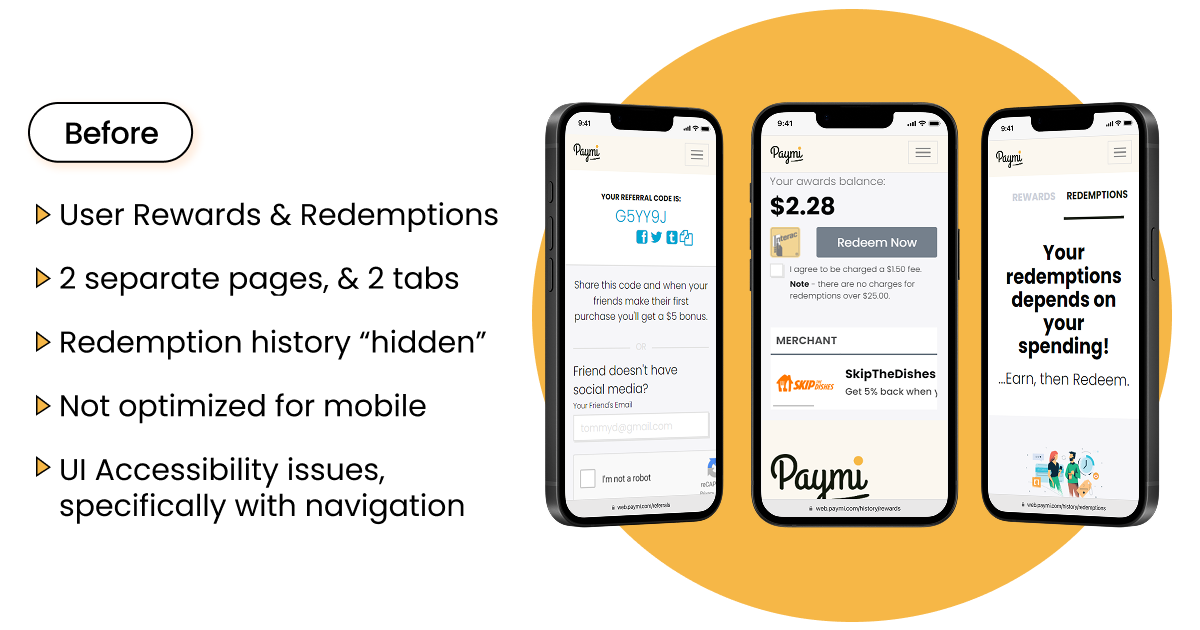
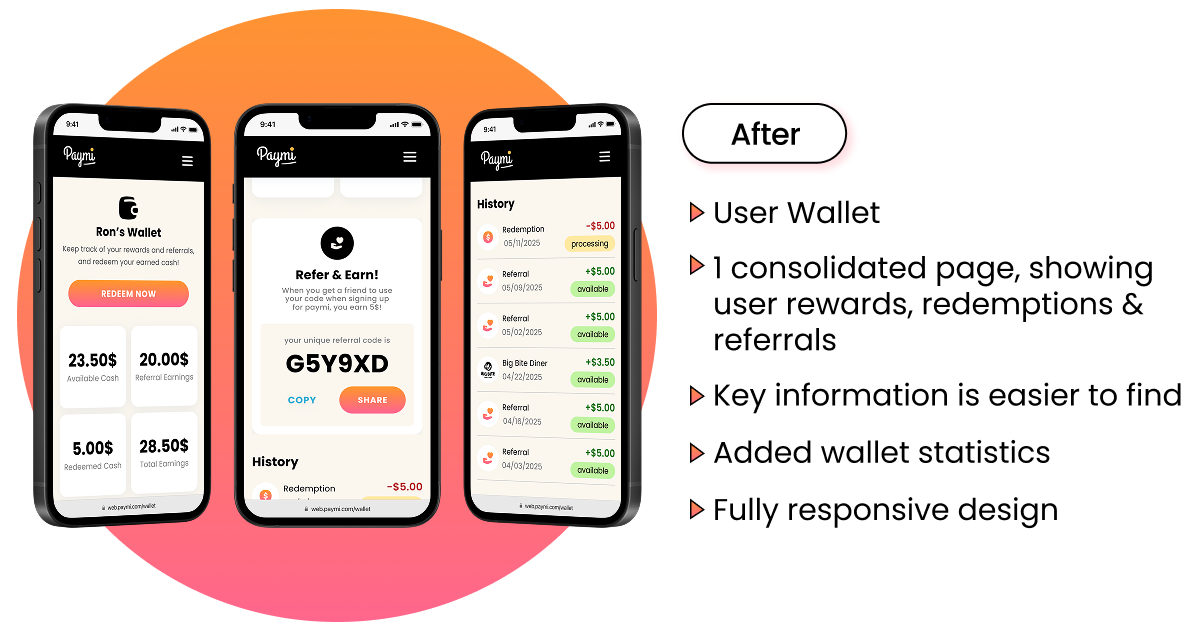

I redesigned Paymi’s web app through a lean process of heuristic auditing, flow simplification, and UI modernization. With tight time and research constraints, we validated changes with a small test group before launch (conducting A/B tests and task based user-interviews), while the redesign implementation was finalized.
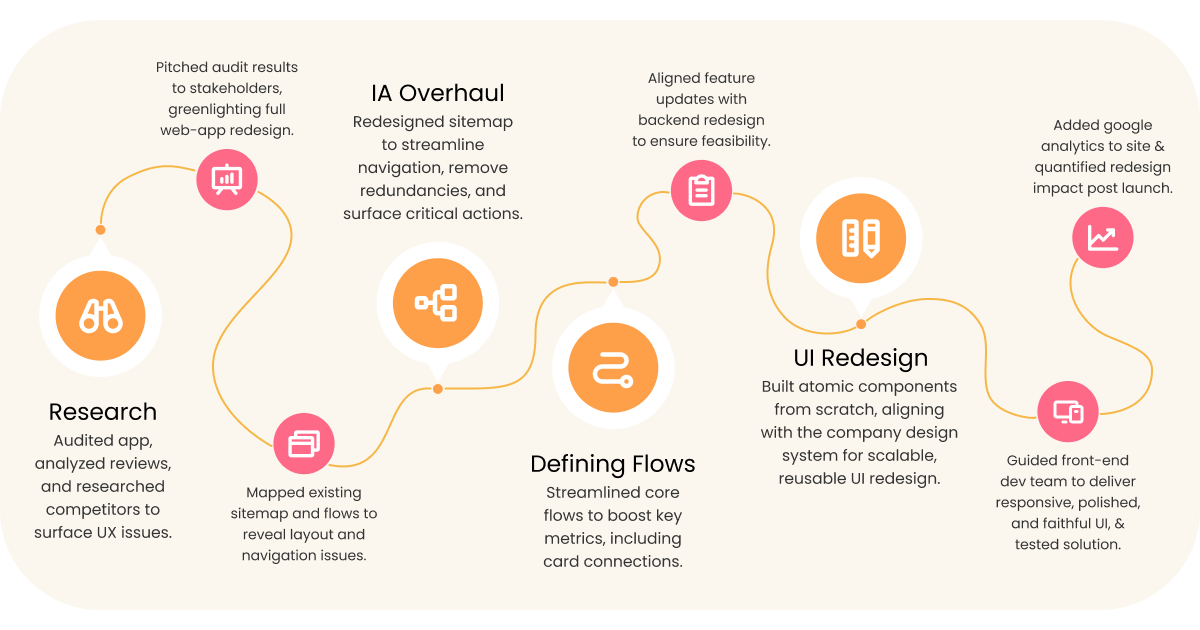
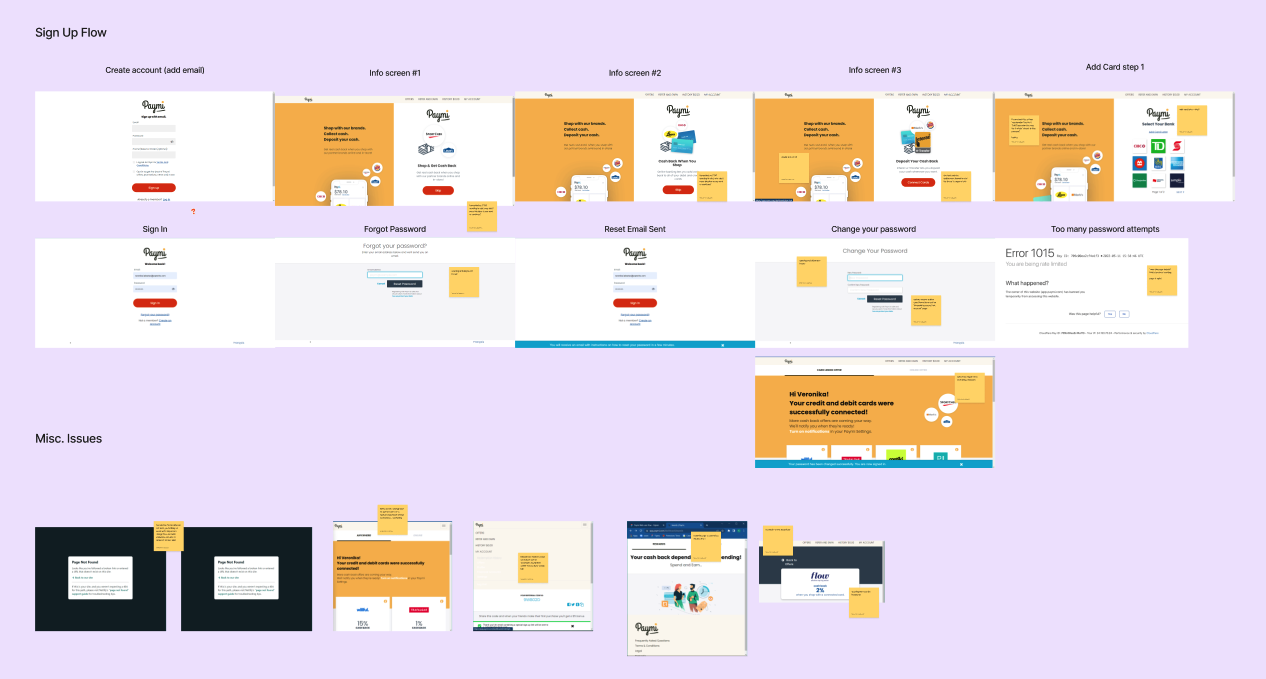
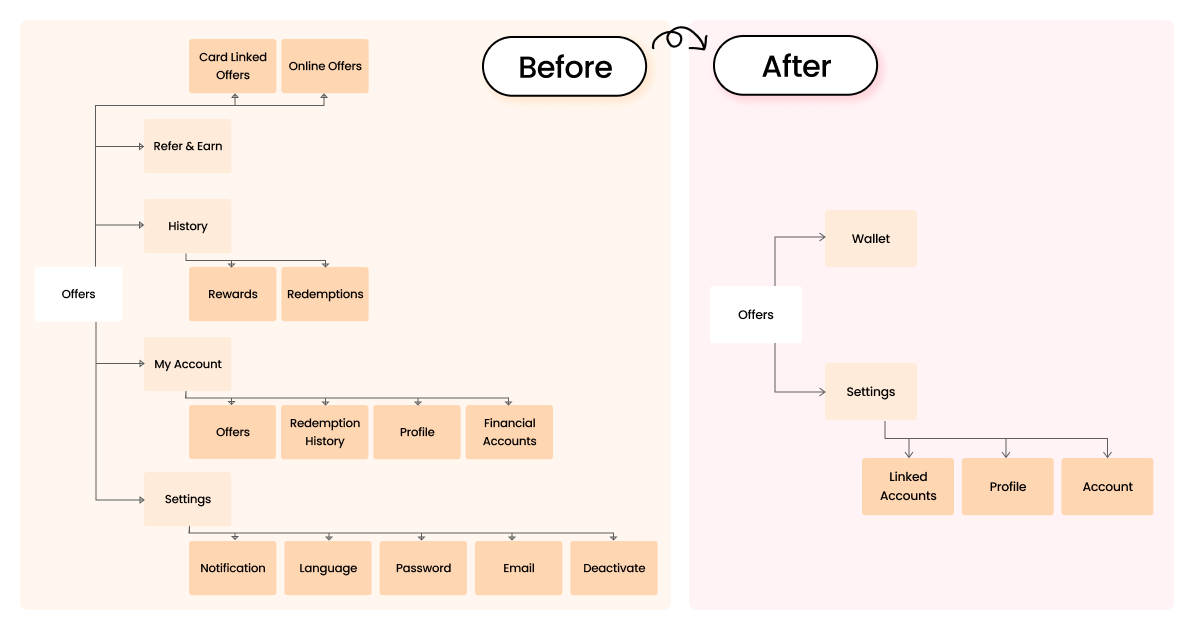
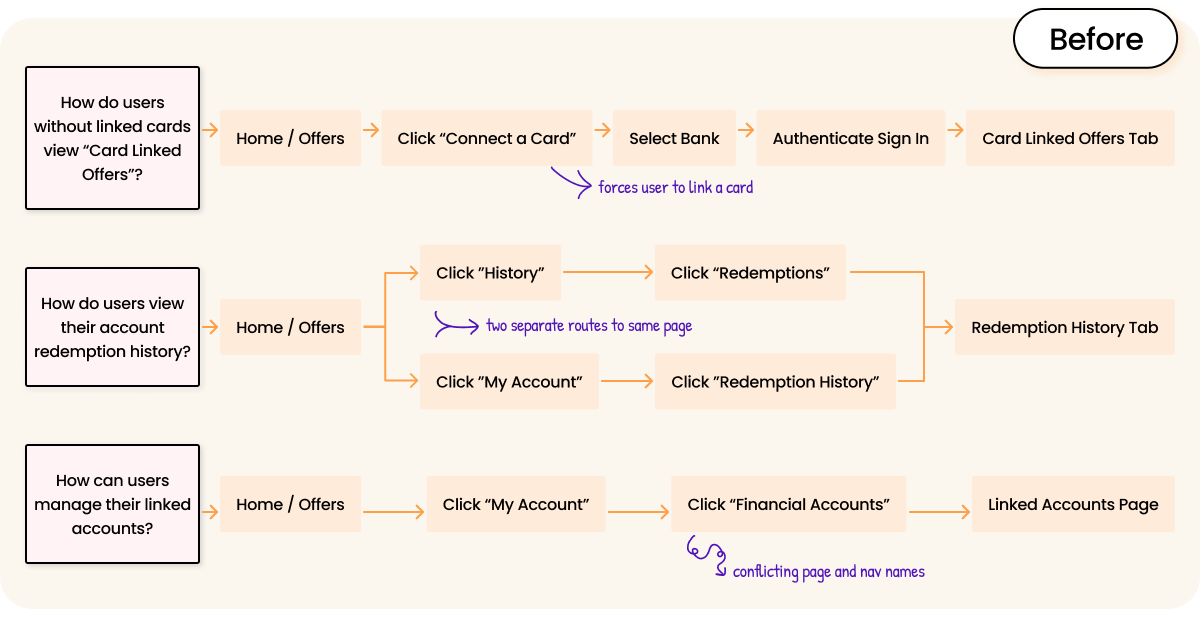
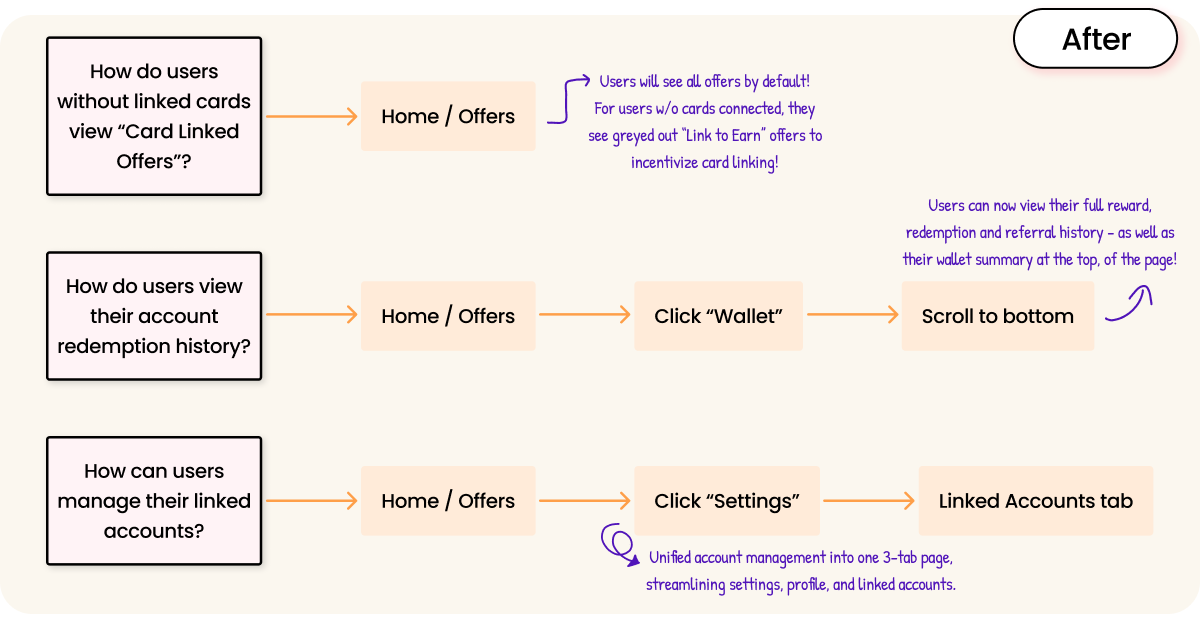
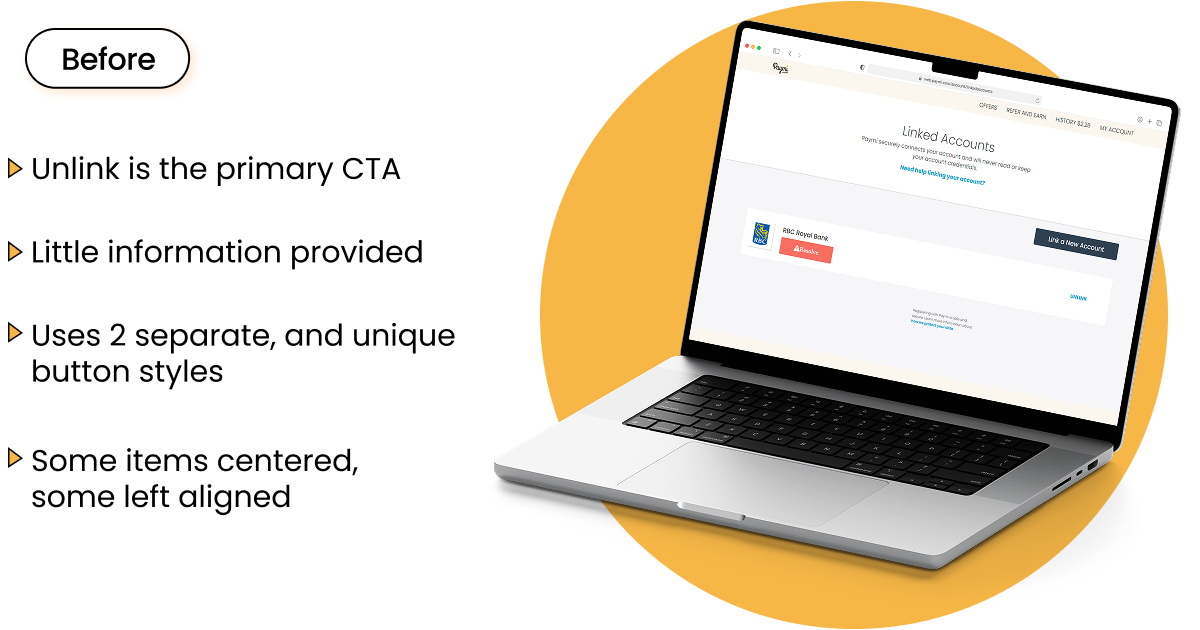
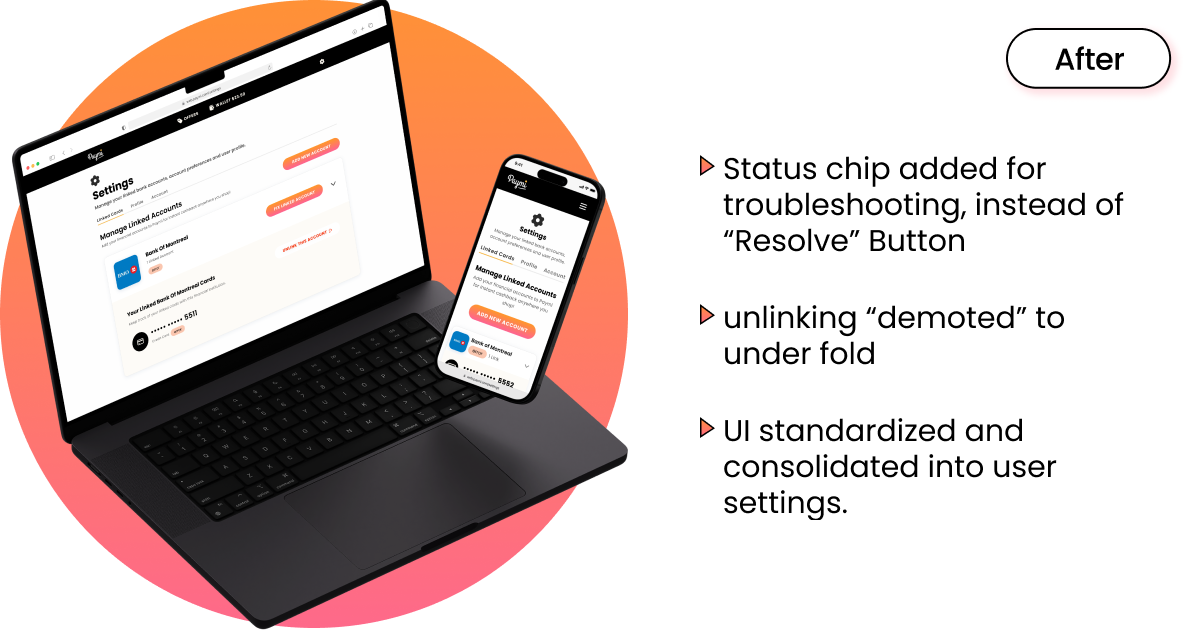
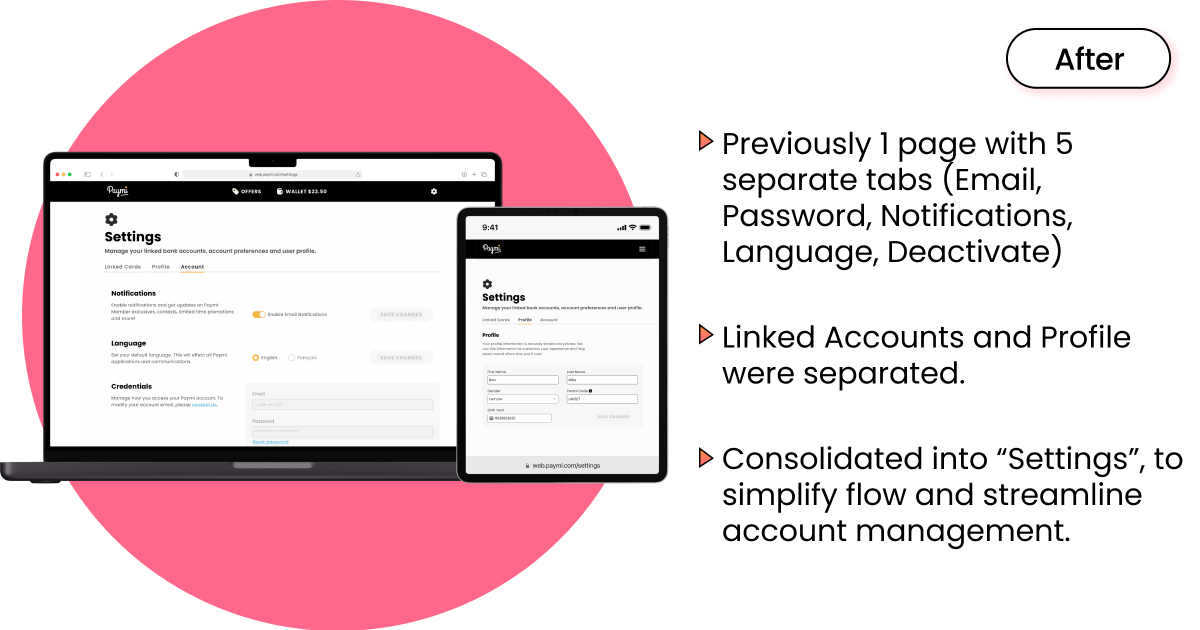
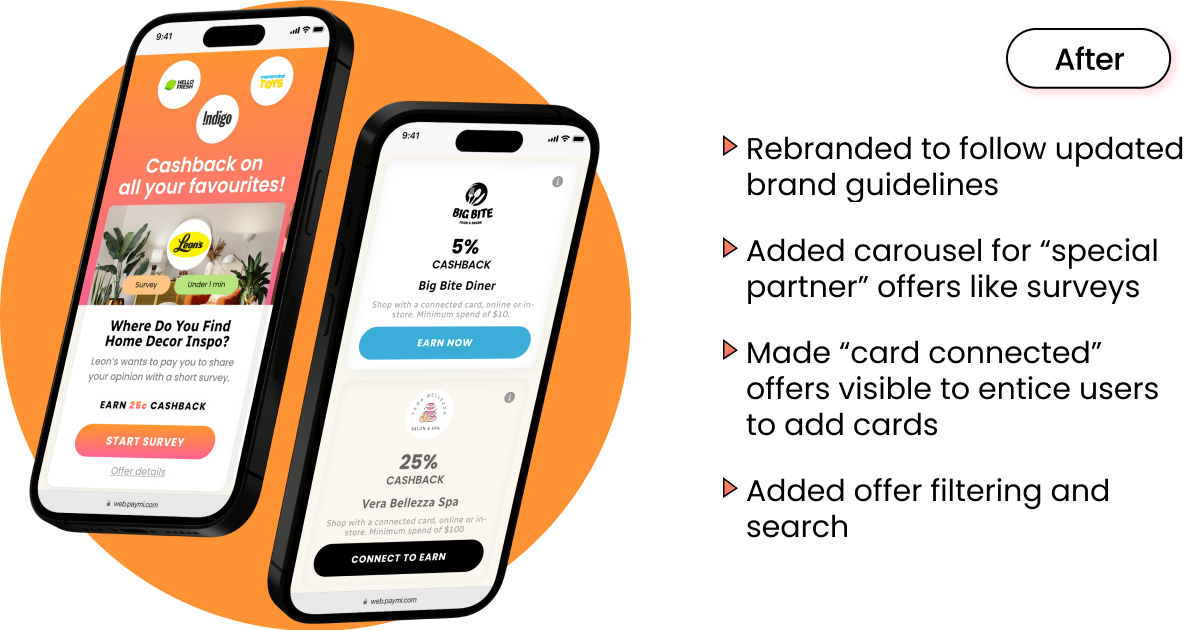
Note: The screens and flows presented here reflect my redesign at the time. I am no longer employed with Paymi, and subsequent updates to the live app do not reflect the design decisions and impact achieved during my tenure.